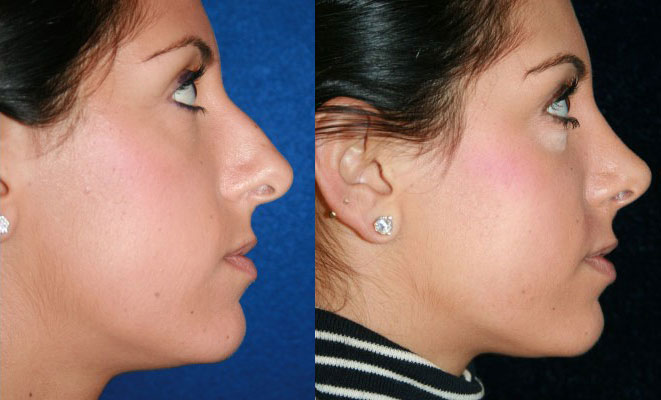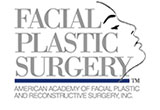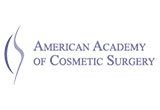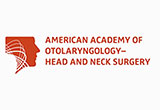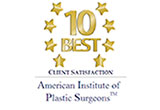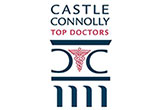Revision Rhinoplasty
in Manasquan, NJ
What Is Revision Rhinoplasty?
Revision rhinoplasty, also known as secondary rhinoplasty, is a complex procedure to reshape or resize the nose after the initial procedure. This surgery is performed on patients who are dissatisfied with the aesthetic or functional results of the original procedure and seek additional corrective surgery. Reasons for dissatisfaction with the original procedure may include a complicated pre-surgical condition, an inexperienced surgeon or a faulty healing process. Because of its complexity, revision rhinoplasty requires the skills of a highly trained specialist.
Candidates for revision rhinoplasty
Anyone who is unhappy with the results of their initial rhinoplasty procedure may be a candidate for revision rhinoplasty. Patients should discuss their initial procedure with Dr. Foster in order to determine the new goals of the revision. It is important that the patient be emotionally and financially prepared for additional surgery. Through consultation and physical examination, Dr. Foster will help determine whether or not revision surgery is an appropriate course of action.
When Should I Consider Revision Rhinoplasty?
Problems patients complain of after the initial rhinoplasty procedure may range from minor cosmetic imperfections to serious medical problems and may include:
- Nostril deformities
- Nasal bone fractures
- Cautery burns
- Septal tears
- Breathing difficulties
It is standard to wait for a year before getting a secondary rhinoplasty surgery. However, patients have also reported seeing excellent results within four to six months of their initial treatment. During your consultation, Dr. Foster will determine when it is time to perform the revision nose surgery.
The Revision Rhinoplasty Procedure
The revision rhinoplasty procedure is usually performed on an outpatient basis under deep sedation or general anesthesia to help reduce any potential discomfort. The surgery is typically performed using an open technique, allowing for greater visualization of the nasal cavity because the already-reshaped bone and cartilage may be more difficult to sculpt.
In cases where reshaping is difficult, a cartilage graft from the nasal septum, ear or rib may be required. Injectable fillers may also be used to correct small defects after the initial procedure, although use of the patient’s own cartilage is preferred. The entire procedure usually takes two and a half to four hours to perform.
Rhinoplasty Before and After Photos
Revision Rhinoplasty Recovery
After the revision rhinoplasty procedure, patients will usually experience bruising and swelling for 5 to 7 days, along with some mild pain that can be managed with medication. As after the original rhinoplasty procedure, nasal surgical packing will be removed within 2 days.
Some bruising and swelling at the surgical site is to be expected for up to 2 weeks. Ice packs will provide relief from these symptoms. During the first few days after surgery, the head should be kept elevated and for approximately 10 days to 2 weeks patients should avoid strenuous exercise.
Once bruising and swelling subside, patients are usually able to return to work and other regular activities. Initial results of the revision procedure will be noticeable right away. However, the patient’s appearance will continue to improve as swelling subsides and the nose heals. The appearance of the nose may slightly alter over the course of a year after surgery, when full results will be visible.
risks of revision rhinoplasty Surgery
While generally a safe procedure, revision rhinoplasty carries the same risk factors as the original procedure. The second surgery, since it involves skin thickened by scar tissue, less cartilage within the nose, and nasal airways that may have been affected by the earlier surgery, is more complicated than the initial one. Risks of revision rhinoplasty may include:
- Excessive bleeding
- Injury to the septum, the wall between the nostrils
- Skin irritation and even skin necrosis
- Infection
- Nasal blockage caused by swelling
- Complications of anesthesia
Revision rhinoplasty is known as one of the most complex cosmetic surgeries to perform. It is important that you make and appointment with a board-certified plastic surgeon, such as Dr. Wayne Foster, when considering a procedure with potential complications.
How long should you wait before deciding to have revision rhinoplasty?
Generally, your nose should be fully healed from the previous surgery. This varies with individual healing rates, but a minimum of six months needs to pass and more likely nine months to a year before you could have a secondary procedure. This is because all swelling needs to resolve and your nose needs to fully settle into its final position and shape. There can be exceptions to this if the revisions need to be made only on the bridge, for instance. This may not require quite as long a timeframe. Dr. Foster will discuss what you can expect during your consultation.
Does revision rhinoplasty take longer to heal?
The healing rates are about the same. Revision rhinoplasty with Dr. Foster actually tends to involve less pain during recovery compared with your original procedure. If the structure of your nose needed to be rebuilt, your recovery can be a little more delicate and you’ll need to be very cautious about any accidental bumping of your nose, but the healing rates should be the same.
How many times can you have revision rhinoplasty?
This isn’t something to take lightly, thinking you can always go back and make additional changes, as revision rhinoplasty is more complicated than the original rhinoplasty procedure. You’ve no doubt seen photos of celebrities who’ve had one too many revisions on their nose. It’s not a good idea to think beyond a single revision procedure. That’s why you need to trust this revision procedure to only an experienced, board-certified plastic surgeon such as Dr. Foster. He only performs facial plastic surgery, so he has extensive experience with the structures involved.
Is revision rhinoplasty more complicated than original rhinoplasty?
Patients don’t know this, but rhinoplasty is one of the most difficult and complicated of all plastic surgery procedures. This is part of the reason many people need secondary surgeries. The revision surgery is more complicated than primary rhinoplasty. These surgeries tend to be long, complicated processes that often require tissue grafts harvested from the septum, ears, or from the rib to restore the underlying structural support. Also, the skin and soft tissues involved can limit the outcome due to previous scarring and other irregularities.
Because revision rhinoplasty is such a complex procedure, you need to trust only a surgeon with extensive experience. Dr. Foster is board certified in head and neck surgery, giving him the extensive knowledge and training necessary for a successful secondary rhinoplasty. He has studied advanced rhinoplasty techniques, and this combination of training and experience is valuable for revision procedures.
How long will my bruising and swelling last after revision rhinoplasty?
There will be bruising and swelling, just as with your original procedure. Much of it will have passed by the tenth day following your revision surgery, but it can take up to a full year for your swelling to totally subside. Sometimes swelling will show itself in the morning and fade through the day.
How do I know if I should have revision rhinoplasty?
Revision rhinoplasty is often performed to correct breathing problems that have developed as the nose has healed from the previous surgery. The nose has complicated anatomy and rhinoplasty is a delicate procedure. Plus, healing can sometimes change the initial results for the worse.
The decision whether to have a previous rhinoplasty revised is a personal one. There are no clear-cut signs or signals here. Obviously, you chose initially to have this surgery to change the appearance and/or function of your nose. If you still aren’t satisfied with the way your altered nose looks, then revision nose surgery could be rewarding. If it comes down to breathing problems, revision surgery is basically a necessity.
How should I prepare for revision rhinoplasty?
Your preparations for revision nose surgery are the same as they were for your initial surgery. Because you have already had one or more surgeries on your nose, revision procedures tend to be less painful, and there is less bruising.
You’ll need to plan on sleeping with your head elevated for the first week to help keep swelling down, so you’ll want to arrange your bed with extra pillows and whatever you need. You’ll need to plan for missing about one week of work. Any strenuous activity or exercise needs to wait for one full month. If your work involves strenuous activity, you’ll need to arrange for those tasks to be covered by others.
Schedule a Consultation
Looking to reshape or resize your nose after your initial rhinoplasty? Schedule a consultation with us at our Toms River office by calling (732) 914-2233 or calling (732) 449-2099 for our Manasquan office.



